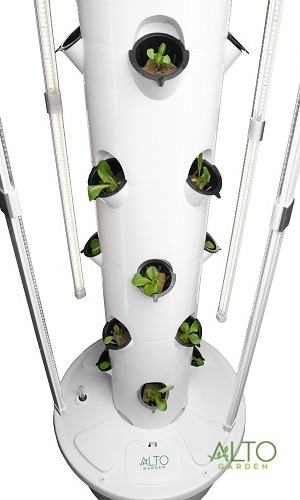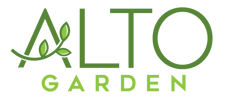Dec 26th 2024
How to Use a Hydroponic Tower with Lights for Faster Plant Growth
Hydroponics is soil-less gardening that may be done either inside or outdoors. It’s a terrific choice for folks with little or no gardening space, or who wish to cultivate herbs and veggies during the winter. These days, you can even find a grow tower with lights which provide added convenience. We will discover the significance of the lighting technology utilized in hydroponic towers, and how to grow hydroponic plants in this article.
Why Opt for a Hydroponic Tower?
Efficiency is the key to hydroponic towers. They may be used indoors or out, save water, and lessen the need for pesticides. Hydroponic towers could be the next green thumb endeavor for you, regardless of your space limitations. They are a cleaner and more sustainable gardening method.
Hydroponic Towers: A Peek into the Science
Hydroponic towers have the ability to precisely deliver a flow of nutrients is what makes them so amazing. Whereas plants in soil have to work hard to find nutrients, in a hydroponic system – everything they require is provided to them by a stream of water that is infused with nutrients. In addition to accelerating growth, this efficiency lowers the risk of illnesses that are prevalent in conventional gardening.
Importance of Lighting in Hydroponic Systems

In a vertical hydroponic system, lighting is crucial. For outdoor systems, this can be solved by carefully positioning the plants so that they receive more sunlight when needed. However, if the vertical hydroponic garden is indoors, the plants will have less or no access to sunlight, so they require electric grow lights to thrive. The cost of grow lights is particularly high for large hydroponic farms, but with the introduction of new LED lighting technology, growing hydroponic plants indoors at home is becoming much more feasible.
To achieve good plant growth light should be both high-quality and energy-efficient. Because your system has plants at different layers, they’ll usually need the same amount of light from a similar distance. The lighting panels should be positioned in a way that provides even lighting coverage across the all the plants. For instance, peppers need plenty of light for up to 18 hours a day, but they also need the light to be close otherwise, they won't thrive.
Because farmers want the best possible light from above to reach every area of the plant, they may even teach plants to grow horizontally. For example – because plants in a vertical tower system are angled, it may be ideal to utilize many lights that are set vertically. Lighting could be an issue with indoor zigzag vertical hydroponic systems as well. Given that each plant is at a different height, panels suspended from the ceiling might not be the best option. To supply even light that is equally spaced, it is usually necessary to place many light panels on top of each pipe.
So when it comes to plant growth and development, you can see light is crucial but sometimes also the most restricting component. Thus, for vertical hydroponic purposes, using an aesthetically pleasing and well-optimized grow tower with lights maximizes photosynthesis and plant development.
Lighting Requirements for Indoor Hydroponic Towers
Knowing how to grow hydroponic plants with the right light is essential. Choosing the proper lighting setup for indoor gardening might be the difference between a flourishing and a mediocre garden. This is what you should know:
Natural Light
Natural light can be an excellent (and free) source of light exposure for your plants if you're fortunate enough to have a sunny window. However, depending solely on natural light can be challenging. The amount of sunlight your plants receive can vary greatly depending on the time of year and your location. You'll need to make sure your tower is positioned to receive maximum sunlight, which may require rotating it frequently to prevent uneven growth.
Artificial Light
The best option for steady, year-round growth is artificial lighting. Choosing the right grow lights for hydroponics is essential for a healthy garden. The primary kinds of lighting that you may utilize are listed below.
- The best option for hydroponics is LED grow lights. LED lights are low-heat, energy-efficient, and can be tailored to provide particular light spectrums that are perfect for plant development.
- Although less effective than LEDs, fluorescent lights are more reasonably priced. They are ideal for operations on a modest scale.
- Intense light is produced by high-intensity discharge lights, which are excellent for big installations but may be excessive for smaller towers.
Understanding the Light Spectrum: Red vs. Blue Light
Colors ranging from blue to red are included in the light spectrum; some light bulbs emit mostly blue or red light, while others emit white light or a combination.
- Blue light (400–500nm) helps with vegetative development, a good germination light should contain blue lights.
- Red light (600–700nm) helps with blooming and fruiting, promoting flowering and fruit production.
If you're growing solely leafy greens, you can get away with using exclusively blue light, even though a balance of blue and red light is ideal for plant development. White light offers a balance of both. For example – sunlight appears to your eye as white, but actually contains the complete spectrum. This can be seen by directing sunlight through a prism. The production of flowers or fruit is supported by light from the red section of the spectrum. In lettuce experiments, more blue light produces "spicier" lettuce with a curlier texture, while less blue light produces lettuce with a flatter texture and a milder flavor. To find out what kind of light your lightbulb generates, check its specs. Light bulbs labeled as “white light” or “full spectrum” will create a balance of blue and red.
Tips for Optimizing Indoor Lighting
- To ensure good plant growth light should be positioned 12 to 18 inches above the plant canopy. They might burn if they are too close, and they won't receive enough light if they are too far.
- To ensure that your plants receive consistent lighting without having to remember to turn lights on and off, use timers to automate the light cycle.
- In order to ensure equal plant development, ensure even lighting around your tower garden.
- Know the different types of grow lights for hydroponics. A blend of red and blue light works best. Blue light is helpful for leafy greens, while red light helps plants in the production of flowers and fruit. White light offers a balance of both.
- To determine the kind of light that the light bulb emits, look at its specs. "White light" or "full spectrum" lights emit a balanced mix of blue and red.
- Plants should be pruned to avoid crowding. Herbs and greens continue to thrive when they are regularly harvested. So don’t forget to harvest your plants on time.
Even in the darkest areas of your house, a hydroponic tower with lights can provide ideal conditions for your plants to flourish.




